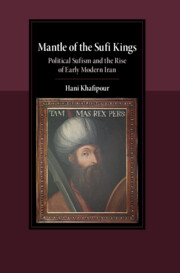Refine search
Actions for selected content:
615947 results in History
Chapter 16 - ‘Usefully Unofficial’ Reading
- from Part III - New Genres
-
-
- Book:
- African Literature in Transition
- Published online:
- 23 October 2025
- Print publication:
- 06 November 2025, pp 313-332
-
- Chapter
- Export citation
Index
-
- Book:
- African Literature in Transition
- Published online:
- 23 October 2025
- Print publication:
- 06 November 2025, pp 445-456
-
- Chapter
- Export citation
Contents
-
- Book:
- Institutional Change and Property Rights before the Industrial Revolution
- Published online:
- 23 October 2025
- Print publication:
- 06 November 2025, pp vii-vii
-
- Chapter
- Export citation
Conclusions
-
- Book:
- In the Shadow of the Vatican
- Published online:
- 23 October 2025
- Print publication:
- 06 November 2025, pp 205-218
-
- Chapter
- Export citation
Introduction
-
- Book:
- In the Shadow of the Vatican
- Published online:
- 23 October 2025
- Print publication:
- 06 November 2025, pp 1-13
-
- Chapter
- Export citation
Conclusion
-
- Book:
- Institutional Change and Property Rights before the Industrial Revolution
- Published online:
- 23 October 2025
- Print publication:
- 06 November 2025, pp 229-234
-
- Chapter
- Export citation
9 - Wardship and the Wars of the Three Kingdoms
-
- Book:
- Institutional Change and Property Rights before the Industrial Revolution
- Published online:
- 23 October 2025
- Print publication:
- 06 November 2025, pp 199-228
-
- Chapter
- Export citation
Figures
-
- Book:
- In the Shadow of the Vatican
- Published online:
- 23 October 2025
- Print publication:
- 06 November 2025, pp vii-viii
-
- Chapter
- Export citation
Chapter 8 - ‘How to cultivate a love for reading’
- from Part II - Readers and Audiences
-
-
- Book:
- African Literature in Transition
- Published online:
- 23 October 2025
- Print publication:
- 06 November 2025, pp 166-183
-
- Chapter
- Export citation
7 - Conclusion
-
- Book:
- From Frontiers to Borders
- Published online:
- 23 October 2025
- Print publication:
- 06 November 2025, pp 217-233
-
- Chapter
- Export citation
Chapter 6 - Still Images, Moving Images
- from Part I - Producing Print
-
-
- Book:
- African Literature in Transition
- Published online:
- 23 October 2025
- Print publication:
- 06 November 2025, pp 129-146
-
- Chapter
- Export citation
Bibliography
-
- Book:
- From Frontiers to Borders
- Published online:
- 23 October 2025
- Print publication:
- 06 November 2025, pp 234-262
-
- Chapter
- Export citation
Chapter 12 - Autoethnographic Expression and the Politics of Educational Adaptation
- from Part III - New Genres
-
-
- Book:
- African Literature in Transition
- Published online:
- 23 October 2025
- Print publication:
- 06 November 2025, pp 238-256
-
- Chapter
- Export citation
Chapter 10 - A Century of Readers and Readings
- from Part II - Readers and Audiences
-
-
- Book:
- African Literature in Transition
- Published online:
- 23 October 2025
- Print publication:
- 06 November 2025, pp 202-218
-
- Chapter
- Export citation
Chapter 20 - Print and the Question of Literature in Islamic West Africa
- from Part IV - Worlds of Print
-
-
- Book:
- African Literature in Transition
- Published online:
- 23 October 2025
- Print publication:
- 06 November 2025, pp 392-408
-
- Chapter
- Export citation
Chapter 2 - Expansive Languages in Nineteenth-Century Central Africa
- from Part I - Producing Print
-
-
- Book:
- African Literature in Transition
- Published online:
- 23 October 2025
- Print publication:
- 06 November 2025, pp 59-76
-
- Chapter
- Export citation
Part I - Producing Print
-
- Book:
- African Literature in Transition
- Published online:
- 23 October 2025
- Print publication:
- 06 November 2025, pp 13-146
-
- Chapter
- Export citation

Mantle of the Sufi Kings
- Political Sufism and the Rise of Early Modern Iran
- Coming soon
-
- Expected online publication date:
- November 2025
- Print publication:
- 06 November 2025
-
- Book
- Export citation
Part II - Readers and Audiences
-
- Book:
- African Literature in Transition
- Published online:
- 23 October 2025
- Print publication:
- 06 November 2025, pp 147-218
-
- Chapter
- Export citation
Chapter 5 - A Tale of Two Print Cultures
- from Part I - Producing Print
-
-
- Book:
- African Literature in Transition
- Published online:
- 23 October 2025
- Print publication:
- 06 November 2025, pp 112-128
-
- Chapter
- Export citation
